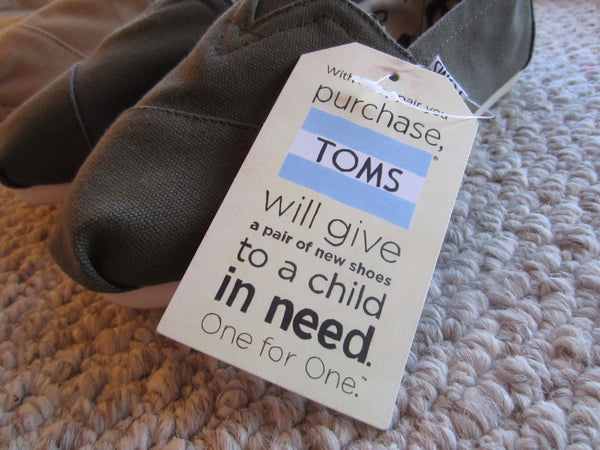For many entrepreneurs, starting and running your own company is satisfying enough. After all, it is a huge accomplishment. Operating a retail business and overseeing every decision, no matter how important or small it may seem, is no easy task. It takes years of research, commitment, and sheer willpower — not to mention financing — to turn a great idea into a successful business.
Some business owners, however, crave more than just a healthy bottom line. Socialentrepreneurship, according to theStanford Social Innovation Review,is the use of a business to help develop, fund, and implement solutions to social, cultural, and environmental issues. It often creates deeper purpose and meaning, and allows entrepreneurs to think beyond benefiting themselves.
But how can retail entrepreneurs use the social enterprise model to benefit both their chosen cause and their business? How do social entrepreneurs get started? In this article, we’ll discuss how social entrepreneurship can be an advantage for retailers, examine different business models and offer tips on how to turn your company into a more rewarding business.

Image Credit:Life in Leggings
Social Entrepreneurship In Retail
Social enterprises can take on many forms. There are large non-profit organizations such as the Red Cross that rely on generous donations and government support, as well as for-profit companies that make and sell products that have the potential to change the world. Electric automaker and energy storage company Tesla is a good example of the latter. Their products focus on using clean energy, and the company’s founder, Elon Musk, is outspoken about combating climate change.
In terms of the retail industry, footwear brandTOMSmay be the most famous social enterprise in North America. The California-based company founded in 2006 utilizes a one-for-one model: for every pair of TOMS shoes sold, the company donates a pair to a person in need.
Warby Parkeris another example of social entrepreneurship. The low-cost yet fashion-forward glasses brand donates a pair of glasses to a person in need for every pair purchased. Since 2010, the company has sold more than 250,000 pairs of glasses, and has subsequently given away the same number of pairs.
Companies like TOMS and Warby Parker have revolutionized the retail industry.
These enterprises help solve social issues, receive plenty of media attention because of their altruistic missions, and still have no trouble churning profits.
When Warby Parker co-founder and co-CEO Neil Blumenthal was asked why he chose to launch a social enterprise, the former non-profit director toldMashable, “We want to demonstrate that you can build a profitable, scalable company that does good in the world and not charge a premium for it.”
The Benefits of Social Entrepreneurship for Retailers
In addition to impacting your preferred cause, entrepreneurs also benefit from running a social enterprise.
According to educational portalManagement Study Guide, some of the top advantages for social entrepreneurs include:
- Funding opportunities. It’s often easier to raise funding for social enterprises. Not only is it easier to raise that capital below market rates, but the government and other organizations offer significant incentives and grants for burgeoning social entrepreneurship projects.
- A natural hook for marketing and promotion.Since you’re tying your business to a worthy cause, your business has a story that’s enticing to customers and the media. And the more unique your solution for your cause, the more likely you are to receive publicity.
- A supportive community.In the same token that it’s easier to raise funds for social entrepreneurship businesses, it’s also easier to round up support. Members of the social enterprise business community tends to be supportive of one another, so you can get the backing of likeminded individuals for your business idea.
Social Entrepreneurship Models
According toThe Power of Unreasonable People: How Social Entrepreneurs Create Markets That Change the World, a 2008 non-fiction book published by Harvard Business School Publishing. Authors John Elkington and Pamela Hartigan identify three different models of social enterprise. They are:
- Leveraged non-profit, which leverages financial resources to respond to social needs.
- Hybrid-non-profit, which uses profits from some business activities to sustain other operations that have social or community purposes.
- Social business venture, which creates change through social means.
Non-profit organizations typically rely on donations and financial support from individuals, foundations, or other corporations. A return on investments isn’t expected, and in that way, non-profits have a bit more leeway.
For-profit social enterprises often launch with funding from investors, either through a business investor or online funding platforms such as Kickstarter. What’s different about for-profit businesses is that investors must be repaid through equity or dividends, and that it’s essential to not just have a social mission but a profitable business as well.
Retailers have adapted the three aforementioned social entrepreneurship models for their own brands. Let’s examine some ways retail businesses are creating sustainable social enterprises.
Buy One, Give One

Image Credit:Entrepreneurship Life
As mentioned earlier, companies like TOMS and Warby Parker have revolutionized the retail industry by using the one-for-one model. According to an AlleyWatcharticle, companies like BoGoLight, FIGS, Roma Boots, and One World Futbol Project also use this model to not only sell their goods to customers, but give them to people who may not have access to things like lights, sporting equipment, and school uniforms.
SinceTOMS成立于2006年,他们的一对一模式的扩张nded from selling and providing just shoes. TOMS Eyewear helps save and restore eyesight for people in developing countries. TOMS Bags benefits advancements in maternal health, providing skilled birth attendants and vital materials for safe births. In the countries where TOMS Roasting Co sources its coffee beans, the company helps provide safe water.
尽管像汤姆斯公司的成功,e-for-one model has not been immune to criticism. Some experts believe that providing shoes and glasses to people in need only helps them in the short-term and doesn’t address deeper socioeconomic issues, such as why they’re unable to afford shoes and glasses in the first place. It has also been said that companies that use the buy one, give one model might end up doing more harm than good.
“There is definitely a need for footwear in underserved markets,” Valeria Budinich, of Ashoka, a non-profit that supports social entrepreneurs, told theNew York Times. “But those markets need new technology, production processes and distribution chains that [are specifically designed for] rural areas. Models like TOMS have many great features but aren’t designed to come up with that level of transformation.”
Despite the criticism, TOMS is still widely popular with shoppers. The company has sold and given roughly 60 million pairs of shoes, employs more than 500 workers, and in 2014, sold half of itself to Bain Capital for $625 million.
Subscribe to Retail Radar
Get more Retail News & Trends in your inbox
Unsubscribe anytime
Supporting Local
Another common model for social entrepreneurship is by focusing on supporting other local businesses. This model not only helps boost the local economy by putting money back into the hands of local producers and suppliers, but also is moresustainableand environmentally friendly.
According toAlleyWatch, Whole Foods Market is a good example of a for-profit retailer that focuses on supporting local. The Texas-based organic foods and healthy living store makes it a point to work with a network of national farmers and partners to source its produce, meat, fish, and dairy. At the community level, Whole Foods works with local purveyors of condiments, preserves, baked goods, and more to help drive attention to small businesses and boost the local economy.
In addition to supporting local businesses, Whole Foods runs theLocal Producer Loan Program, which gives out up to $10 million in low-interest loans each year to independent farmers and food purveyors to help them grow their businesses and eventually become a product that Whole Foods carries at its stores.
Donating To the Community
Perhaps the easiest and most obvious way to turn your business into a social enterprise is by donating part of your profits to a local charity or cause. This could mean financial support, in the form of giving away products, or having your employees volunteer their time.
For example, the department store chain Target began donating 1% of its profits to local schools in 2010. Their financial support helps fund books, school supplies, field trips, and even food at schools across the U.S. and around the world. They chose education because Target shoppers told the company it was their top social concern, and supporting education would create a more educated workforce in the future. And in 2015, Targetreached its goal赠送10亿美元的教育.
Donating profits isn’t the only way to give back. Goodwill is another example of a different altruistic model. The non-profit makes money through its network of thrift stores, which receives all its products through anonymous individual donations. Selling these goods allows Goodwill, in turn, to fund services for job training and employment placement, as well as provide other services for local residents who may be disenfranchised.
How To Start A Social Enterprise
Social enterprises enable business owners to combine their passion for a social mission with their business expertise, but how do you get started? Anarticleon Inc. provides some valuable tips on how to become a social entrepreneur:
- Know your issue:Regardless of your cause, you must be 100% behind it. Unsure of what you’re passionate about? Consider volunteering or working with a non-profit that advocates for your chosen issue first.
- Build your brand:Choosing the right name, business model, and products are essential to getting the word out and creating a brand that people can trust.
- Treat it like a business:Even if you run a non-profit, every element of your brand should be business-driven. While you’re supporting a worthy cause, you have to ensure you keep your business afloat and running smoothly.
- Hire employees smarter than you:It’s impossible to know everything, which is why it’s important to employ people who are skilled in specific areas. Hire staff members that are experts in their own niche and then get out of their way.
- Be transparent and authentic:There should be no questions about how money is made and where it goes. Share these figures with your staff and customers so they have a clear sense of where their money is being funneled, and what impact their dollars make on a specific cause.
- Develop partnerships:Align your brand with other organizations that have good track records and are doing similar work. Participate in co-marketing for joint campaign, orco-sponsor an eventwhere both brands’ products will be on display.
- Make an emotional connection:Never lose sight of what your ultimate goal is and make sure your customers know your mission. This cements their trust in your brand and helps ensure a loyal customer base.
- Use different platforms to tell your story:From creating videos to utilizing social media, you should be visible everywhere. And whatever the platform you use to tell your brand’s story, continue to underscore the mission of your social enterprise.
Moving Forward with Social Entrepreneurship
The underlying characteristic of all social entrepreneurs is undoubtedly passion. Believing that you can help “change the world” takes an incredible amount of ambition. At the same time, social businesses can be more rewarding because they’re more than just about the bottom line. And that’s often why they experience success — passion (and compassion) is contagious. Transparency demonstrates your passion to current and potential customers, and helps them feel loyal and invested in your brand and mission.
Social entrepreneurship FAQ
What is social entrepreneurship and examples?
What are the 4 types of social entrepreneur?
- Social Innovator: someone who discovers a new solution to a social problem.
- Social Activist: someone who works with communities to create social change.
- Social Intrapreneur: someone who works within an existing organization to create social change.
- Social Investor: someone who uses investments to help achieve social objectives.

